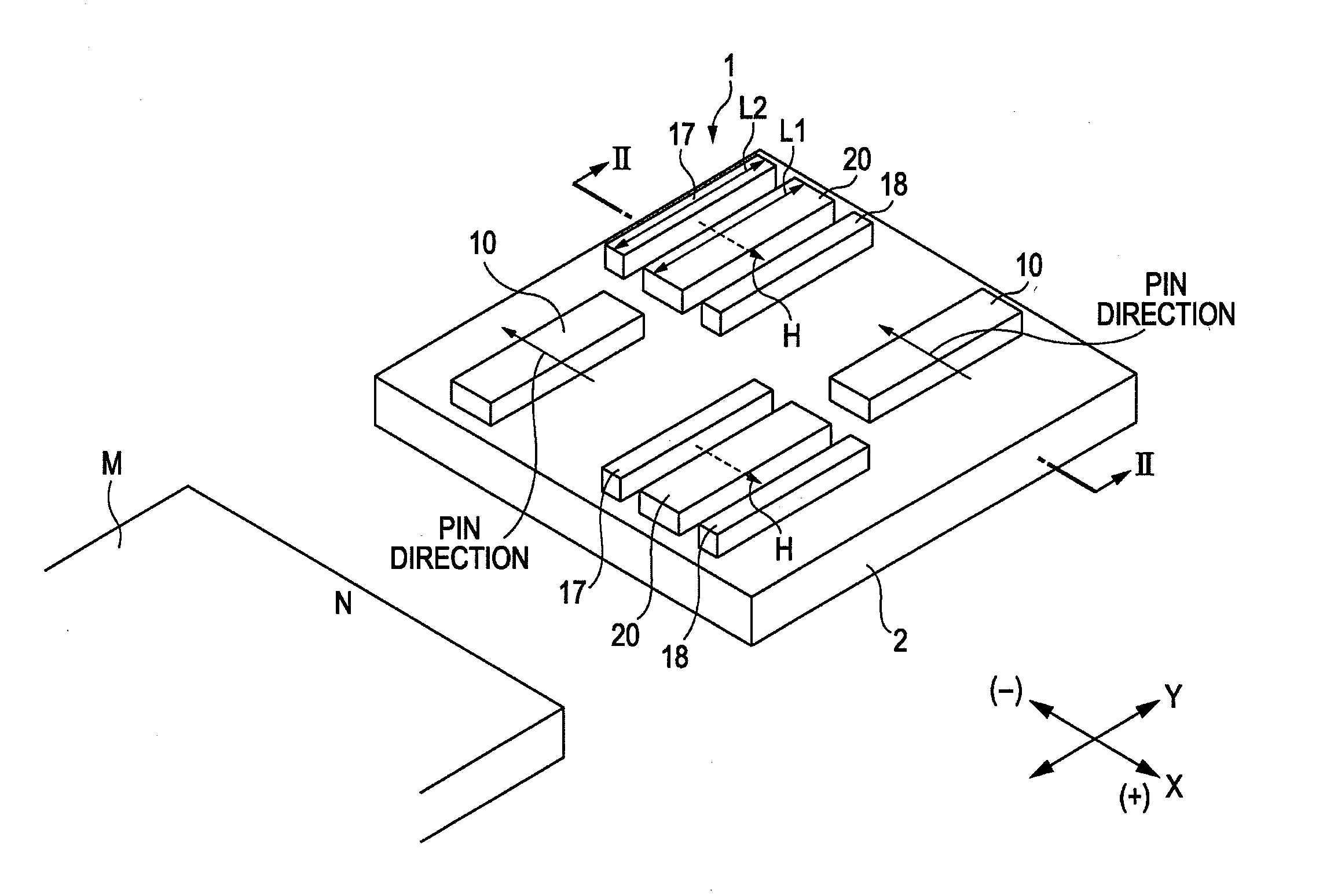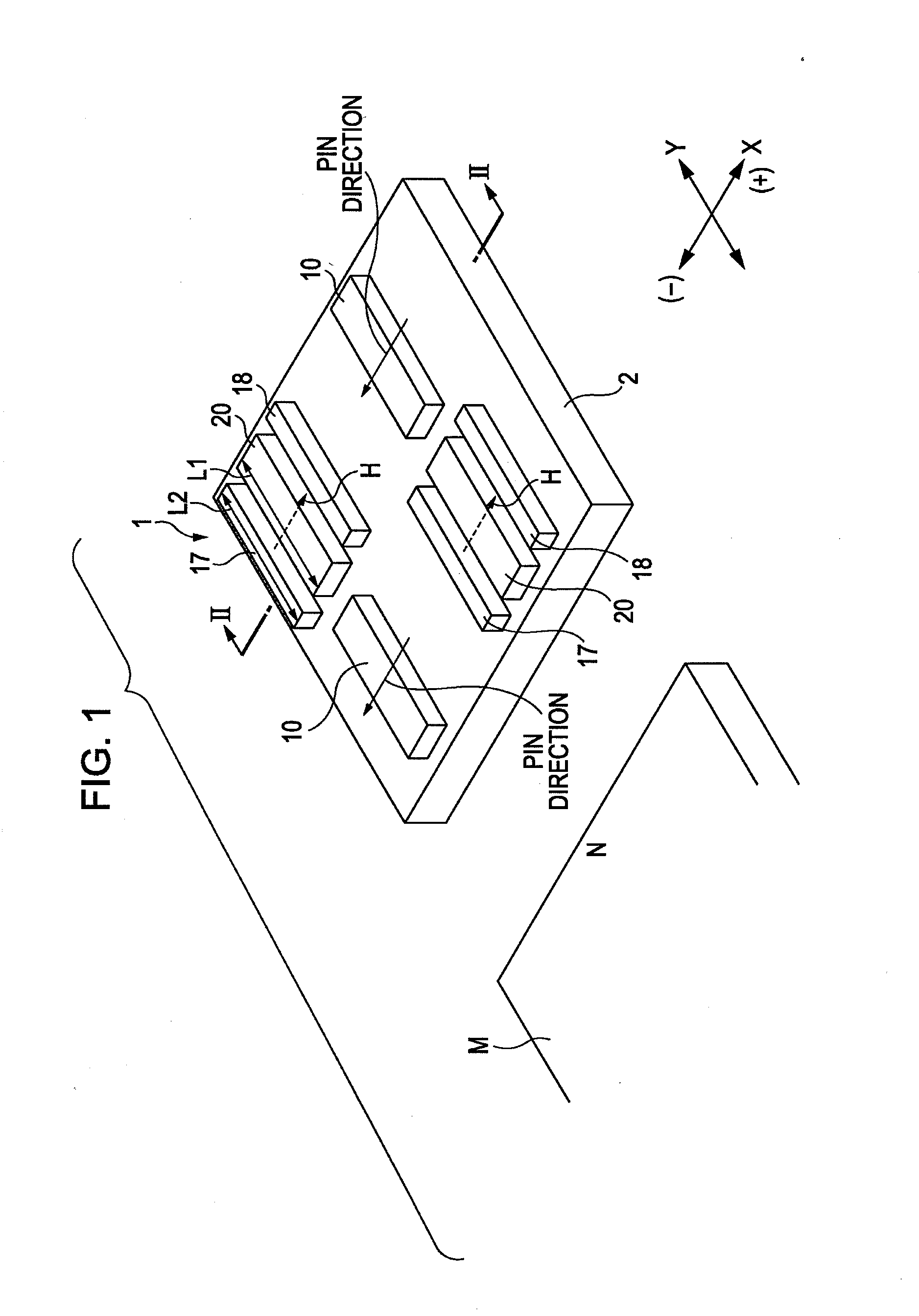Magnetic detector and method for making the same
a magnetic detector and fixed resistor technology, applied in the field of noncontact magnetic detectors, can solve the problems of inability to make the fixed resistor and the magnetoresistive element in the same process, inability to form the fixed resistor having the same resistance r and tcr as the magnetoresistive element, and difficulty in forming the fixed resistor having the same resistance r and tcr. , to achieve the effect of reducing the size of the magnetic detector and being easy and adequa
- Summary
- Abstract
- Description
- Claims
- Application Information
AI Technical Summary
Benefits of technology
Problems solved by technology
Method used
Image
Examples
Embodiment Construction
[0034]FIG. 1 is a perspective diagram of a magnetic detector according to an embodiment of the present disclosure. FIG. 2 is a cross-sectional view of the magnetic detector of FIG. 1 taken in a thickness direction along line II-II in FIG. 1, as viewed in the direction of the arrow. FIG. 3 is a circuit diagram of the magnetic detector of this embodiment. In the drawings, the X direction indicates the width direction, the Y direction indicates the length direction, and the X direction is orthogonal to the Y direction.
[0035]A magnetic detector 1 shown in FIG. 1 is an IC package in which magnetoresistive elements 10, fixed resistors 20, and an integrated circuit 19 (refer to FIG. 3) are integrated.
[0036]The magnetic detector 1 is not in contact with a magnetic field-generating member, a magnet M, for example. The electrical resistance of the magnetoresistive element 10 changes in response to the change in direction of the external magnetic field applied by the magnet M
[0037]The magnetor...
PUM
| Property | Measurement | Unit |
|---|---|---|
| thickness | aaaaa | aaaaa |
| thickness | aaaaa | aaaaa |
| temperature | aaaaa | aaaaa |
Abstract
Description
Claims
Application Information
 Login to View More
Login to View More - R&D
- Intellectual Property
- Life Sciences
- Materials
- Tech Scout
- Unparalleled Data Quality
- Higher Quality Content
- 60% Fewer Hallucinations
Browse by: Latest US Patents, China's latest patents, Technical Efficacy Thesaurus, Application Domain, Technology Topic, Popular Technical Reports.
© 2025 PatSnap. All rights reserved.Legal|Privacy policy|Modern Slavery Act Transparency Statement|Sitemap|About US| Contact US: help@patsnap.com



